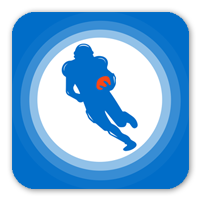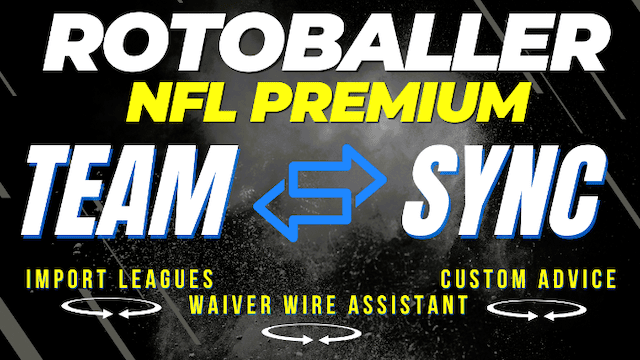Antonio Losada's top fantasy football quarterback values and market inefficiencies to invest in for 2020 NFL drafts using ADP and historical year-end finishes.
No matter which type of person you are. No matter which type of fantasy owner profile you fit into. No matter what, you're looking for market inefficiencies as we all are. Why paying an extra-price for something that ultimately will yield the same results as something similarly good going on a steep discount? That question has no reasonable answer, to be honest with you.
The question you might be asking yourself, though, is the one regarding how and where to find market inefficiencies to take advantage of? And that's the hard one to answer. There must be one, that's for sure. The problem, of course, is finding it.
We can look at correlations between different stats, try to find what goes cheap yet is still productive, etc. One way of measuring how good our draft was in terms of price/production, that is, value or what we come to call Return On Investment (ROI), is to just take two data points in consideration: ADP (where we draft players) and season-end Rank (where the player ends the year ranked at in fantasy points). Just using those two values we can easily calculate how valuable our picks were. The concept of ROI got me thinking about how one year's values relate to the next one, and how they impact future ADPs in fantasy football. That's why I tried to explore the relation and arrive at some conclusions trying to find out if there is anything to exploit there.
Featured Promo: New Novig users get a $25 purchase match (50% discount up to $25) on your first Novig deposit, and 3 free months of RotoBaller's "Big-4" Premium Pass (NFL, NBA, MLB, NHL) which includes exclusive tools for Betting, Props, DFS and more! CLAIM IT NOW
Return On Investment Values
When it comes to ROI, I keep things as simple as I can. I just take a player's ADP entering the season and divide it by his season-end final ranking among all players in the league. That's because every player is available in drafts and therefore every player should be taken into consideration for the ranking.
Any player with a ROI at or over 1.0 yielded a positive value and therefore turned into a valuable play for his fantasy owner. Any player with a ROI under 1.0 finished the year in a position lower than that in which he was drafted. Although there is virtually no limit in how large (positively or negative) a ROI-mark can be, we can assume the lowest value is 0.001 (ADP 1, rank over 500) and the largest 500 (ADP 500, rank 1).
I already looked at the wide receiver position, and it's time to tackle quarterbacks now including every QB-season from 2000 to 2018 (580 in total), with ROIs ranging from 0.01 to 112.5. It only includes players from which I know their ADP in years N and N+1, and their ROI marks for years N and N+1 too.
Year-to-Year ROI to ADP Correlation
What I wanted to test was a pretty simple idea: if a player exceeds his value in year N, we can assume he will become more expensive in year N+1 and therefore he would be less valuable in terms of potential ROI. Think of Patrick Mahomes. He entered the 2018 season with an ADP of 112.5, yet he finished ranked as the best player that year and the QB1 by extension. Obviously, his ADP in 2019 went all the way up to 14.9, almost 100 spots more expensive! No wonder his ROI in 2018 was an incredible 112.5 (you can't get better than first-overall) but it dropped to just 1.06 (just barely a value play) in 2019 as he finished 14th overall and QB7.
This is how the relationship between the season-end rank in year N and the ADP in year N+1 has gone through the last couple of decades (negative changes mean lower ADPs, that is, higher draft positions).
There is, in fact, a positive correlation up to an R-Squared value of 0.006 between both variables--the relationship goes up to 0.03 if considering only the top-30 QBs of the season, which are more than those fantasy-relevant. The better a quarterback has done in year N, the more expensive he has gone the following season.
With all we know by now, we should expect a similar relationship to exist between the ROI in year N and the ADP in year N+1. We should assume a player beating his expected value would be drafted higher the next year.
Absolutely correct. The correlation here is positive again, and it actually blasts the strength of the last one with an R-Squared value of 0.11 this time!
This means one thing: fantasy owners focus more heavily on final raw results rather than the value returned by the players given the paid price.
While that is nothing unreasonable (we're bumping up the prices and paying more for the best performers), it is not the best way to tackle the market. It is an inefficiency. It's a good strategy, but it is not the smartest one nor the one benefitting us the most. That's why there is still a window there to go grab the best possible values that are not yet inflated.
What History Tells Of Changes In ADP And ROI
Since the 2000 season, and looking only at QB-seasons from players of whom we know their year-to-year changes in ADP, Rank, and ROI, this is how the numbers look like:
- 99 players became more expensive while improving their ROI (acceptable investment)
- 182 players became more expensive while lowering their ROI (worst investment)
- 106 players became cheaper while lowering their ROI (acceptable investment)
- 186 players became cheaper while improving their ROI (best investment)
In percentages, we can say that 33% of players remained in the balance, 33% became worse plays from year N to year N+1, and 33% became better plays. Those are three evenly split numbers, but if we add together the first and the last ones we get to 66% of players at least retaining their ROI values from one season to the next one.
What we should try to identify are the commonalities among those in the remaining group of players in order to try and avoid them. I tried to find some similar numbers and traits repeating themselves in their profiles to get to a sound conclusion.
Avoiding ROI-Fallers
The 33% of players becoming worst plays from year N to year N+1 (that is, more expensive in terms of ADP while providing worst ROI-marks at the end of the season) make for 182 players in my data set ranging from 2000 to 2018.
There is a boatload of data to unpack there, so let's go step by step.
- The majority of players were between 24 and 29 years of age.
- Virtually "every" player came from playing a full 16-game season, with the rest mostly at 14+ games played.
- The vast majority of players logged between 250 and 375 completed passes.
- Most of the players logged between 400 and 600 pass attempts.
- In terms of yards, most reached between 3600 and 4225 passing yards.
- Most players scored between 20 and 30 touchdowns.
- Most players threw between 8 and 15 interceptions.
- The vast majority of quarterbacks logged fewer than 50 rushing attempts.
- The peak on PPG was in the 17-to-19 clip, with most players finishing the year averaging between 14.5 and 19.
Here are the players from 2018 with similar/close profiles to that one at the year's end, and how they did in 2019.
Only Dak Prescott improved his ROI from 2018 (5.3) to 2019 (27.5). The other three had worse seasons in virtually every metric, and even taking Cam Newton out of the equation because of his injury we'd still remain 1-versus-2 on the overall balance. Jared Goff was drafted as a top-10 QB this season but could only finish as the QB13 (ROI 3.0 compared to 5.8 last year) while Mitchell Trubisky was drafted as the QB19 and ended QB26 (ROI 1.8 in 2019 compared to 4.2 in 2018).
Finding ROI-Risers
The same process can be followed to try to identify traits present in all of the historical ROI-Risers in order to find what has repeated over the years in their profiles to take advantage of it going forward. This is how all of the players in the data set that became cheaper but better ROI-values are distributed in different stats.
Some of the shared similarities:
- The majority of players were between 27 and 31 years of age.
- Virtually "every" player came from playing a full 16-game season, with the rest mostly at 14+ games played.
- The vast majority of players logged between 230 and 385 completed passes.
- Most of the players logged between 415 and 625 pass attempts.
- In terms of yards, most reached between 3400 and 4300 passing yards.
- Most players scored between 18 and 25 touchdowns.
- Most players threw between 10 and 14 interceptions.
- The vast majority of quarterbacks logged fewer than 30 rushing attempts.
- The peak on PPG was in the 15.5-to-18.5 clip, with most players finishing the year averaging between 10 and 18.5.
Here are the players from 2018 that would have fit a similar/close profile to that one at the year's end, and how they did in 2019.
Three players fit the profile rather nicely, with one more (Russell Wilson) left out due to his high TD numbers (35 TDs in 2018). No matter what, though, all of those three spotted quarterbacks were on a path to improve his year-to-year numbers this past season. Keenum and Stafford had their seasons cut short due to injuries or multi-QB systems, but both were improving their efficiency metrics. Derek Carr completed a full season and bested his 2018 numbers in fewer attempts.
Looking at their ROI-values, Derek Carr improved it while Stafford stayed the same and Keenum dropped his a bit mostly to lack of playing time. As is often the case with ROI, improving it from one year to the next one doesn't mean finishing in a better position, but rather giving more value for the price. That is what happened to all three QBs in the list, who with the exception of Carr finished ranked lower among QBs in 2019 than they did in 2018 but still provided good ROIs.
Potentially Great ROI-Plays for the 2020 Season
Now that we have identified stats that fit the model for both good and bad "next-year ROIs", we can try and apply it to the current season trying to take advantage of our knowledge to build the best possible roster in 2020. Here are some 2019 players that fit the profile of the average ROI-Riser.
I'm going to confess and let you know that I'm very excited about what the spreadsheet spit out:
- Kirk Cousins had a really efficient season, limiting his mistakes and potential misses but still getting a great number of yards and touchdowns through the air. Given how often Minnesota runs the ball it is possible that most fantasy owners pass on Cousins again, making him a cheap play with great upside.
- I already introduced you to Derek Carr. He keeps walking the Earth with the tag of "middling QB" attached to him for some reason, but he always plays above-average football and will probably go drafted later again next season. He already fitted the "good-value play" profile in 2018, and he repeats in 2019 leading up to 2020.
- Jimmy Garoppolo had a season similar to that of Cousins: low-volume, high productivity. Most people will fade that in favor of quarterbacks with more chances at racking up points, but if San Francisco improves the receiving corps even the slightest it's more than probable to see Garoppolo exceed his ADP again.
- Carson Wentz doesn't fit the model when it comes to his rushing (much better than that of the other three QBs) but the rest of his numbers made it. Pretty similar situation to that of Garoppolo in San Francisco; if Philly can boost the WR corps Wentz will have everything to have a monster season.
Here are the actual ADP values of the aforementioned players in best-ball leagues as of this writing.
None of them is currently getting off the board earlier than at 94th spot (Carson Wentz) and even that amounts to more than seven full rounds of picks. The value to extract from any of those players is really high and given their historical comps the odds are all of them have more than valuable seasons in 2020.
More Fantasy Football Analysis





 RADIO
RADIO
































